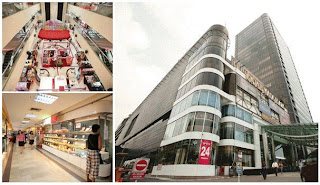Some readers might remember my blog post on getting a new car some two years ago. I might not have revealed then but I did not take a loan for that purchase. It was the first time that I bought a car without the help of a loan and this is the way I like it. So, my car is an asset, a depreciating asset but still an asset.
Some asked me why I did not take a loan since interest rates are so low and I could invest my money for higher returns? This is a dangerous way to think, in my opinion. The returns from my investments lack certainty but the required monthly repayments to the lender are dead certain.
Borrowing in order to finance personal consumption is not a good idea, is it? A car is for personal consumption, is it not? Well, sometimes, we really need a car for various reasons and what if we could not avoid borrowing to finance the purchase?
Prior to buying my current car, I would make sure to take a loan of no more than $20,000 to be repaid over 3 years. That worked out to a monthly repayment of some $600 per month which was comfortable for me. So, for example, if the price tag of a car was $80,000, I would make sure I had at least $60,000 which would be made up of the trade in value of my old car and cash.
I do know of people who would borrow 100% against the value of a car and some would take 10 years to repay the loan. I cannot imagine why anyone would want to do that.
So, to protect potential buyers lacking in financial prudence, I believe the government's new measures are in the right direction:
Singapore’s central bank said the tenures of motor vehicle loans will be capped at five years, with the maximum motor vehicle loan amount pegged to 50 or 60 per cent of the vehicle’s purchase price, depending on the Open Market Value.
Some banks here had offered financing of up to 100 per cent of the purchase price for new cars, with tenures lasting up to 10 years. (Source: TODAY online)
Think carefully. If we need to borrow heavily in order to buy a car, can we really afford it?
Earlier this morning, I read an article which reported that the lower and middle income groups may be priced out by the new measures. It is understandable that car dealers are upset as their business could be negatively affected.
Eddie Loo, managing director of CarTimes Automobile, said: "We have a mixture of customers —— those who come and buy (with) cash, but there are definitely people who want a hundred percent loan.
"So it’s almost like 50—50 kind of market that people come into. So to penalise those who need a car and have to fork out 50 per cent of the loan amount, I think, the timing is not very correct.
Do I sense some sympathy from Mr. Loo towards people who need a 100% car loan to buy a car? What do you think? Mr. Loo thinks that "the timing is not very correct". When is a correct time for encouraging financial prudence?
Why not hear what buyers have to say?
John Molina, a prospective car buyer, said: "I want to buy a car, but because of this, I mean it’s impossible for me, or it’s almost near—impossible."
Another prospective car buyer, Mark Lim, said: "For those people who are really very rich, to them there’s no effect —— today I want to buy a Ferrari, for example, I don’t even care about how much is the downpayment."
Mr. Molina wants to buy a car. Well, if he had the money to do so, he could satisfy the want. However, since he finds it "impossible" to do so with the new measures in place, he probably is and was a poor candidate for car ownership.
As for Mr. Lim, since it dawned upon him that he could buy a car without a care for how much is the downpayment if he was "really very rich", why not concentrate on getting rich first?
Read article:
Middle & lower—income groups may be priced out of car market: dealers
Related posts:
1. Bought a new car.
2. If we are not rich, don't act rich.
3. Good debt is always good?
4. Slaving to stay in a condominium.
5. The very first step to becoming richer.










































